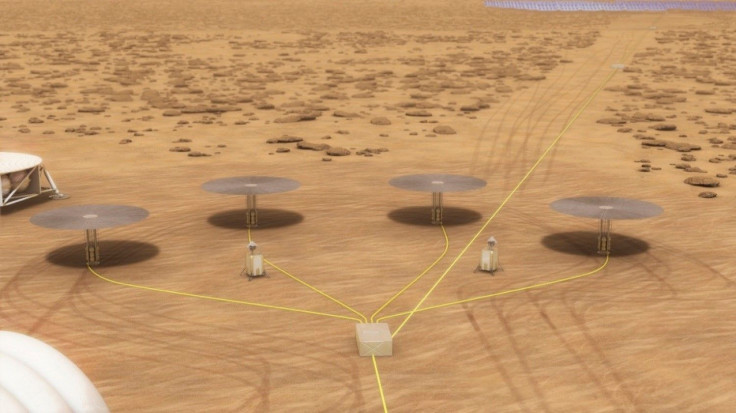NASA Testing Kilopower Project’s Nuclear Reactor Core For Future Mars, Moon Habitats

When humans eventually travel to Mars for in-person exploration or set up a base on the moon, one of the essential requirements would be a steady power supply to meet a myriad of needs. NASA is one step closer to a solution for a power system that could help future space missions meet that need.
The space agency’s Kilopower project is currently testing the core of a small nuclear fission reactor and according to Marc Gibson from NASA’s Glenn Research Center, who is lead engineer on the project, the core would be connected to the power system later in January after which the team would carry out end-to-end checks. A full-power test lasting about 28 hours would be completed by late March.
The output from a single Kilopower unit, whose nuclear core uranium-235, would be about 10 kilowatts continuously for about 10 years. Four such units would be sufficient to meet the power requirements of an outpost on another world.
Nuclear power makes sense for any mission that involves setting up a base in any place other than Earth. Fission can produce power for a long time without relying on local resources, and the reaction would take place irrespective of external conditions, which we know are rather extreme on both the moon and on Mars.
Lee Mason, NASA’s principal technologist for power and energy storage, said in a statement Thursday: “We want a power source that can handle extreme environments. Kilopower opens up the full surface of Mars, including the northern latitudes where water may reside. On the Moon, Kilopower could be deployed to help search for resources in permanently shadowed craters.”
Once all the ground testing is complete, NASA will start looking into moving Kilopower into a space power system. The timeline for that is not yet clear.
Currently, long-term space missions, such as the Curiosity rover or the Viking landers on Mars, are powered using radioisotope thermoelectric generators, which produce a couple of hundred watts of power, a fraction of what Kilopower can.
Other space power plans are afoot too. Russia’s Rocket and Space Corporation Energia, a partially government-owned company, is working on a concept that will use laser beams to transfer power to lunar bases, fired from a spacecraft that is orbiting the moon.
© Copyright IBTimes 2025. All rights reserved.




















